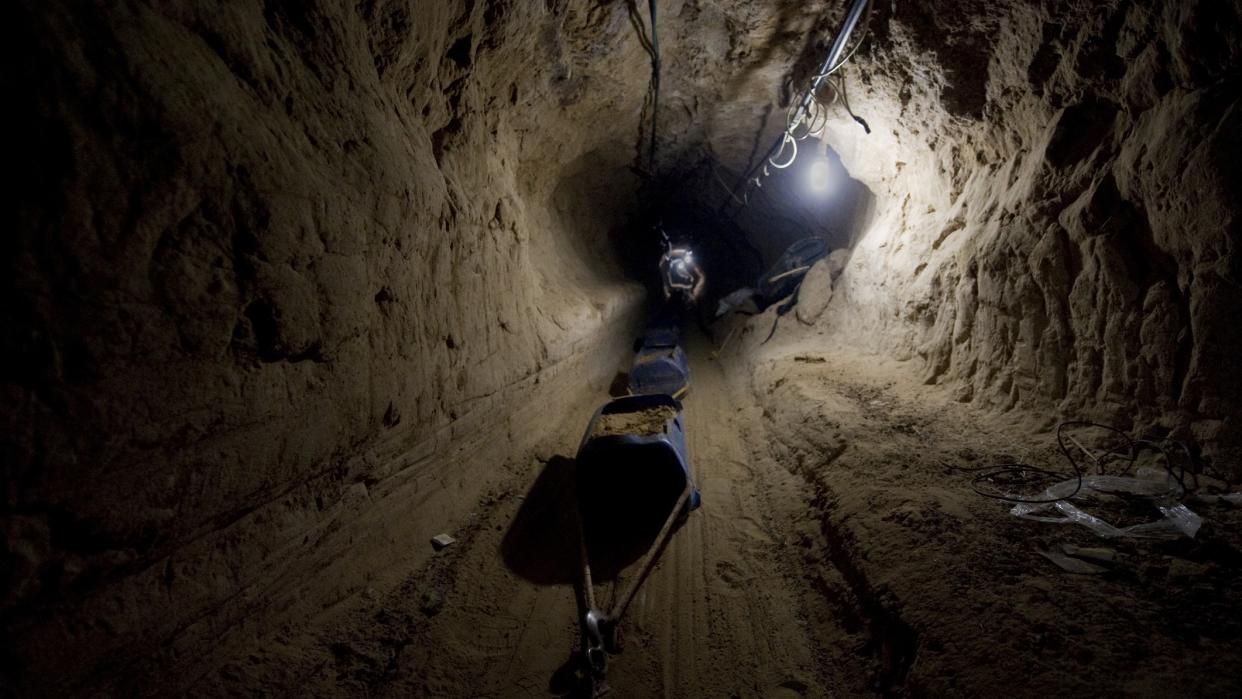Hamas' tunnel warfare: how Israel will contend with the 'Gaza metro'

If or when Israel commits to a ground operation in Gaza, the Israeli Defense Forces (IDF) will have to contend with a labyrinthine network of tunnels beneath the territory.
Dubbed the "Gaza metro", the tunnels are essential to Hamas's offensive and defensive operations. Militants use them to move weapons around and evade detection – "compounding the immense difficulties of fighting in a dense urban environment", said Axios reporter Jacob Knutson.
There is a long history of tunnels being used in military encounters. From ancient Judea to the present conflict, and Flanders as well as Vietnam, "underground conflict has a long and brutal history", wrote The Times' associate editor and columnist Ben Macintyre. For Hamas, its network of underground passageways will be "vital", adds Knutson, to resist any ground invasion, which Israeli prime minister Benjamin Netanyahu has said will be a "long and difficult war".
Where are the tunnels in Gaza?
There are two sets of tunnels beneath Gaza, reported CNN, with one used to smuggle goods from Egypt and launch attacks against Israel, and "a second underground network" referred to as the "Gaza metro". They are "underneath houses and inside buildings populated with innocent Gazan civilians", according to the IDF.
There are roughly 1,300 tunnels, wrote Macintyre in The Times, although it's unknown exactly how big the network is, said Axios, with experts saying "they've grown in scale and sophistication over the past two decades". Some tunnels are even fitted with electricity, lighting and rail tracks. They also end at "dozens of hidden access points".
It's a "very intricate, very large – huge – network of tunnels" on a small piece of land, Daphne Richemond-Barak, a professor at Israel's Reichman University, told CNN. This "vast labyrinth" is more than a mile underground, with Hamas claiming in 2021 to have built more than 300 miles of tunnels, which would make it "less than half the length of the New York City subway system" if true.
Why does Hamas use tunnels?
Hamas has been using tunnels since at least the early 1980s, according to Axios, and they were built for families to communicate and for smugglers to shuttle goods. The "use of tunnels by militants" arose in 1987 "during the first Palestinian Intifada".
Hamas conceived its tunnels to "hit back against a better-armed adversary", wrote The Times' Macintyre. The former Hamas leader Khaled Meshaal was reported as saying in 2014 that "we had to be creative in finding innovative ways".
The use of tunnel warfare "has a long and brutal history", Macintyre added, dating back to medieval times, but it took the invention of gunpowder and 20th-century wars "to turn the earth below ground into a battlefield". They "offer militant groups like Hamas an edge in asymmetric warfare", added CNN, "negating some of the technological advancements of a more advanced military like the IDF".
Can Israel eliminate the tunnels?
Israel has built a "sensor-equipped underground anti-tunnel barrier below a fence spanning its entire border with Gaza", said Axios, while it's also "developed new technologies to detect and collapse tunnels" alongside "robotic platforms to map and fight" in them.
"Combat inside tunnels is incredibly difficult," the military expert Edward Luttwak told The Washington Post, and "standard tactics and weaponry are often not suitable inside a subterranean setting". Navigation and communication systems "don't work so far underground", for example, and "the sound emitted by a weapon being fired is also amplified", which means soldiers require "intensified hearing protection".
Military experts describe this "extensive warren of tunnels" as a "soldier’s nightmare", NBC News added, and the "high-tech advantages Israel enjoys above ground disappear when soldiers go underground". They warn against sending IDF forces "inside the stuffy, narrow passages, which are low on oxygen but full of twists and turns".
Experts suspect "Hamas somehow must have breached or turned off" the sensory barrier and that "locating the entrance of a new tunnel is like finding a needle in a haystack", the US broadcaster added. Once a tunnel has been found, "robots that resemble small monster trucks or drones" go in first to map it before human fighters enter. "Any successes, however, may be only temporary" and tunnels can be "resurrected".

